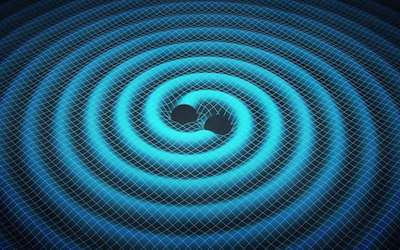PTE考生目前最大的问题之一就是练习题缺乏。除了有限的基本官方书(PLUS,Testbuilder, OG)之外就没有题了。很多英语基础不是很扎实的同学很难找到练习材料。悉尼文波雅思PTE培训学校专门为澳洲,尤其是悉尼、墨尔本的PTE考生准备了适合PTE听力阅读练习的科学60秒。各位PTE同学可以练习PTE听力中的summarise spoken text和PTE口语中的retell lecture,练习记笔记技巧和复述。
听力内容:
60秒科学节目(SSS)是科学美国人网站的一套广播栏目,英文名称:Scientific American – 60 Second Science,节目内容以科学报道为主,节目仅一分钟的时间,主要对当今的科学技术新发展作以简明、通俗的介绍,对于科学的发展如何影响人们的生活环境、健康状况及科学技术,提供了大量简明易懂的阐释。
This is Scientific American — 60-Second Science. I’m Steve Mirsky.
Got a minute?
In 2016 the Laser Interferometer Gravitational-Wave Observatory, LIGO, made the first accepted detection of gravitational waves.
“So any time you move a mass it produces a gravitational wave…so black holes, like the ones LIGO detected, these are stellar mass black holes, about 10 times the mass of the sun. When they’re in orbit they’re
accelerating constantly, so constantly producing gravitational waves.”
Sarah Burke Spola or, of the National Radio Astronomy Observatory in New Mexico, at the annual meeting of the American Association for the Advancement of Science
in Boston on February 18th.
For gravitational waves produced by the acceleration of even bigger masses,
we’re going to need what’s called the Laser Interferometer Space Antenna, or LISA.
“Now if you think of much bigger masses, something like a million times
the mass of the sun, these things are moving much more slowly, much more
far apart, and they’re producing lower frequency gravitational waves. And this is what LISA can detect. So LIGO,
which is operating at these very fast orbits, fast frequencies, is unable to detect these things
that are moving much more slowly and are on a much bigger scale.”
And for even bigger masses, you get to what Burke Spola or is working on: Pulsar Timing Arrays.
“What we do with this technique is use radio telescopes to observe pulsars,
which are neutron stars that are rotating very rapidly and sending their beams of emission
across Earth, several hundred times per second…and the idea is of course if a gravitational wave is passing through Earth, the gravitational wave is stretching and squeezing our space time.
And the tick that we see from these very, very regularly spinning pulsars is speeding up and
slowing down.”
“Just like we can scale the stellar mass black holes that LIGO can detect,
to very, very intermediate mass very large black holes that LISA can detect, Pulsar Timing
Arrays will probe the very massive end of this distribution and the most massive, so the billion
to even 10 billion solar mass binary black holes in the universe. So every time
you get a galaxy merger you can get a binary supermassive black hole, which then will contribute signal
to our Pulsar Timing Arrays by propagating through the galaxy.”
“Of course, gravitational waves does not stop at detection. What we really
want to do is astrophysics with gravitational waves. And use it as a new tool to observe
the universe and understand our place in it.”
Thanks for listening for Scientific American — 60-Second Science Science. I’m Steve Mirsky.
墨尔本悉尼霍巴特文波PTE原创首发
更多精彩请持续关注微信wenbo_tv3。





